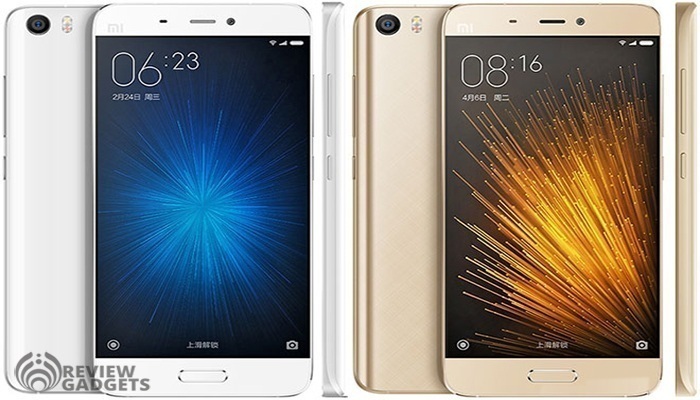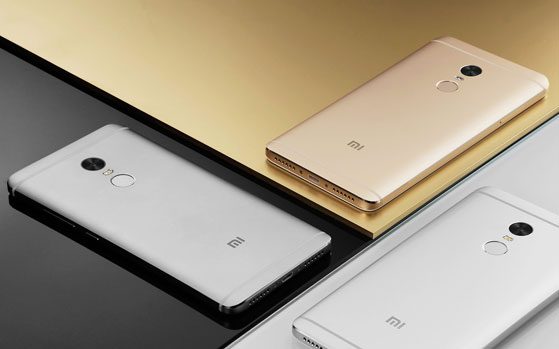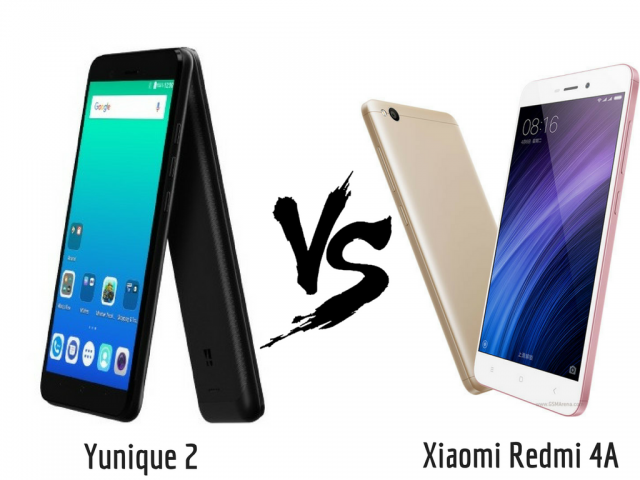Xiaomi MI 4C Review: Xiaomi Company was founded by Lie Jun and co-founded by eight partners in the year 2010. In August 2010, the company launched its first Android phone. And after a year, the company unveiled its first flagship, which was integrated with firmware MI-UI. In 2011, the company released its own smart phone that was the first device based on pre-competitive MIUI and specifications.
Its latest phone is Xiaomi MI 4C. Mi 4C phone is more of an attractive mid-range. It looks absolutely the same as the Mi 4i. Xiaomi will announce an anticipated Mi 5 phone in just a few months. This new Mi 4c phone is widely marketed because of its Fast Charging USB Type-C port. In fact, Xiaomi thought it is a major upgrade to add letter ‘C’ in the end of its name. It has a powerful Snapdragon 808 chip and Xiaomi is shipping this flagship upgrade hardware at half of G4 bidding price.
Xiaomi Mi 4C Launched with latest Processor Snapdragon 808 and also latest UI – MIUI 7
Design and Look
Xiaomi Mi 4c is of 138.1mm x 69.6mm x 7.8mm, completely same as Mi 4i phone. It has an extra 2g of weight for a total of 132g weight. It has polycarbonate shell as its predecessor version (Mi 4i phone). But design is getting repetitive already and we would see something new from Xiaomi sooner rather than later. Its poly-carbonate plastic body is great for its price, providing for good grip and pleasant handling.
Its white matte rear panel is not prone and is very gripped. It has a Fast Charging variety and supports 5V-2A, 9V-1.2A and 12V-1A charging. Unlike some major Companies, which don’t incorporate such chargers inside their box covers, Xiaomi is kind to supplement this type of charger. Its exterior look might be designed in very affordable prices. Its control set is same as on Mi 4i phone, which is very good. On its display, there is a small hidden notification LED, too.
Software
It runs on Android 5.1.1 Lollipop core processor. Instead of changing entire UI, Xiaomi focused on refining their launcher and improving its performance. It runs on MIUI 7 that is 30% faster and responsive and 10% more energy-efficient. It also has new features as a baby album, child mode, new default themes and auto DND option. Xiaomi’s customization function runs very deep. In fact, the Mi phones sold in China don’t have access to Google’s services. And the models sold officially in markets outside China come with a preloaded Play Store app.
Its lock screen has a clock on top left corner. To unlock the phone one swipes and if one wants a quick access to the camera then he just needs to swipe from the right side. Beyond its lock screen is an Android home screen with four customizable shortcuts at the bottom by default. We can have any app there or even folders with multiple items.
There is no app drawer so anything you install pops up on your home screen, which can have unlimited panes. There are no shortcuts and usual routine of removing icons i.e. dragging them up to a recycle bin at the top of the screen will uninstall the corresponding app. There is a pop-up for confirming action, though, so one can’t accidentally uninstall apps. Home screen widgets are available. There are some options available but you can get even more from Google Play Store. Home screen effects are available and you can change the themes also.
The theme will change your home screen wallpaper, lock screen style, system icons, system font and sound profile. Its notification area has two semi-transparent tabs – one host all the notifications while the other one offers customizable quick toggles and a Settings shortcut. There is an enhanced task switcher, also available. Xiaomi brings Edge controls.
There are two gestures. The first gesture is available on one side of the phone and the second one applies inside the camera that taps once for focus and for a second time for taking a picture. Xiaomi provides its own cloud service. Each Mi Cloud account is granted 5GB of free storage. One can use it to backup contacts, messages, gallery, notes, settings, voice recordings, Browser content and his music library.
Xiaomi’s syncing and backup service has lots of similarities with the Apple’s cloud. There is a free Cloud messaging option that allows you to exchange messages over the internet in spite of being billed for SMS but this runs between Xiaomi devices only. MIUI 7 has a new Child mode, which allows you to run only apps. This is beautiful if you have a kid, who likes playing with phone suddenly and you are afraid that he might delete some important data. Its “Do Not Disturb” mode supports better customization and scheduling options.
Connectivity features
It supports 7 LTE bands and you can tap this network band on either SIM, but then the other SIM will default to the GSM band. It also offers dual-band GSM connectivity option and triplicate band 3G connectivity options. Other wireless connectivity features include quad-band Wi-Fi a, b, g, n, ac and Wi-Fi Direct. It supports Bluetooth 4.1, GPS and GLONASS. There is an IR blaster which is located on the top and is attached with the right software to operate any IR controlled home appliance remotely. Xiaomi provides its own Mi Remote app. This phone supports USB Type-C. This USB 3.1 Type-C cables can go up to 10 Gbps speed, but it is limited to USB 2.0 speeds i.e. 480 Mbps.
Touch and Display
It has a 5″ inch Full HD display same as Mi 4i phone. It has 441 PPI. But its display is not resistant from scratches. It has a standard RGB (Red, Green, and Blue) arrangement of the sub-pixels that make up the Xiaomi Mi 4i LCD panel. Its maximum display brightness is 450nit. It scored great results in terms of contrast ratio is 1609:1. These results are quite rare for an LCD and you only see Lenovo K3 Note laptop perform similarly. It comes in five colors White, gray, pink, yellow, and blue. However, display colors are a matter of personal taste. A great feature about the display is its minimum brightness level of 0.8 NIT. The sunlight legibility is about the same as on the Mi 4i and the Xiaomi Mi 4c’s screen performs very well outdoors. You will be able to see on the screen even in the brightest condition.
Camera
It features a 13 MP camera, with a dual-LED and a dual-tone flash. Setup of the camera is absolutely same as Mi 4i phone, which offers good photos, so Xiaomi will be maintaining the same or even a better level of processing. Its camera interface is simple. It has three panes as a virtual shutter, a flash trigger and a front camera key. Slide to the top pane and you will get a choice of twelve filters with live previews. A slide to the bottom hides some advanced modes such as Panorama, Beautify, Timer, Scenes, Gradient, and Manual. The HDR switch is on the virtual camera shutter. The Manual Mode offers manual settings for white balance. Face-Detection switch is an additional feature. HDR mode is conservative enough. Panorama shots are also available.
We can capture both landscapes and portrait panoramic photos with an angle of 180 degrees. The resolution has been increased over Mi 4i. The resolution is about 4000×1240 pixels and image quality is above average. It has a 5MP front camera. It supports slow motion and time lapse videos with customizable features. It is capable of recording up to 1080p @30 FPS videos. Its video recordings are poor at about 15 Mbps while audio is captured at 96 Kbps with 2 channels. Its colors and contrast are good and the frame rate is also good and consistent at 30 FPS. Its dynamic range is above average.
Battery Life
It has a 3080mAh battery that has a solid capacity for a 5″ inch device. In the battery test, it scored a 52h rating. With this battery one can spend two days if one does an hour each of calling, browsing and video. Phone with two SIM cards will cost one day of standby down to just three and a half days. So this dual-SIM achieves a rating of 45 hours, which is far from OK.
Phone Accessories
Its retail box covers only basics items. There are a USB Type-C cable and a charger and no headset.
Variants and updates
Its camera also got upgraded. The camera is now capable of taking full resolution panoramic images, along with full-HD slow motion videos. Lack of an expandable memory slot and a removable battery disappoints its users but it is becoming a trend with many Chinese’s brands. At least Xiaomi Company is dedicated on giving 32 GB or more memory for its smart phones. Just like Xiaomi Mi 4i phone, it is not meant to be a low-cost model of the Mi 4 original, but rather an alternative option. Its processor of S808 chip has two powerful Cortex-A57 cores at 1.82GHz, and four Cortex-A53 blocks running at 1.44GHz. This configuration we have met in LG G4 models. Some salient features of this phone in tabular manner are as under-
Xiaomi Mi 4C Specifications:
| Launched on | September, 2015 |
| Dimensions | 138.1mm x 69.6mm x 7.8 mm
5.44 inch x 2.74 inch x 0.31 inch |
| Weight | 132 g |
| SIM | Dual-SIM |
|
Display |
Type- LCD capacitive touch screen, Size- 5” inches Resolution- 1080 x 1920 pixels Multi touch- Yes |
|
Camera features |
Primary – 13MP, f/2.0, 24mm, face-detection autofocus, dual-LED and dual-tone flash Features- Geo-tagging, touch focus, Video- 1080p@30FPS, Secondary- 5 MP, f/2.0, 1080p |
|
Battery |
Non-removable Li-Ion 3080mAh |
| Colors | White, grey, pink, yellow, and blue |
|
Communication/ Connectivity features |
Wi-Fi 802.11 a, b, g, n, ac, dual-band, Wi-Fi Direct, hotspot Bluetooth- 4.1, GPS- Yes Infrared port- Yes Radio- Stereo FM radio USB Type-C 1.0 reversible connector |
|
Softwares |
OS- Android OS, v5.1.1 Chipset- Qualcomm MSM 8992 Snapdragon 808 CPU- Quad-core 1.44 GHz Cortex-A53 & dual-core 1.82 GHz Cortex-A57 |
|
Other features |
Sensors- Accelerometer, gyro, proximity, compass Messaging SMS(threaded view), MMS, Email, Push Mail, IM Browser – HTML5 Java- No |
My Reviews on this phone-
In my opinion, Xiaomi Mi 4c is upgraded over Mi 4i version. It is beautiful and handy. Its camera performs nice. Its image quality is top, panoramic photos come in high resolution and video quality has also been improved.







